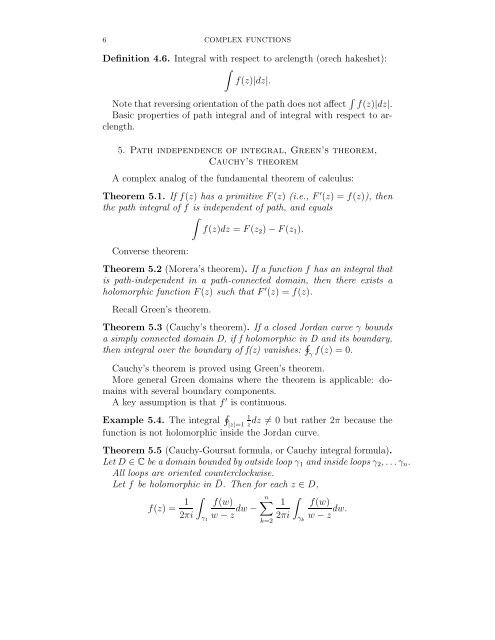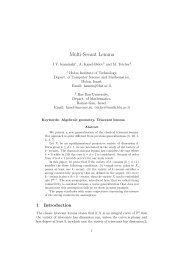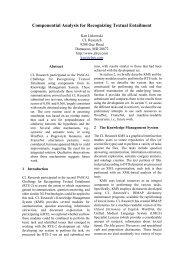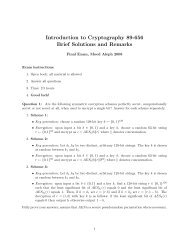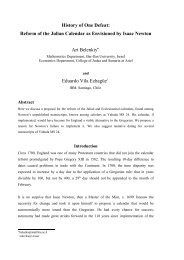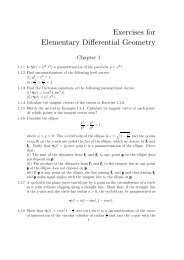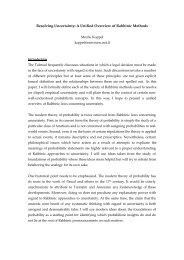COMPLEX FUNCTIONS Contents 1. Complex numbers, Cauchy ...
COMPLEX FUNCTIONS Contents 1. Complex numbers, Cauchy ...
COMPLEX FUNCTIONS Contents 1. Complex numbers, Cauchy ...
Create successful ePaper yourself
Turn your PDF publications into a flip-book with our unique Google optimized e-Paper software.
6 <strong>COMPLEX</strong> <strong>FUNCTIONS</strong><br />
Definition 4.6. Integral with respect to arclength (orech hakeshet):<br />
∫<br />
f(z)|dz|.<br />
Note that reversing orientation of the path does not affect ∫ f(z)|dz|.<br />
Basic properties of path integral and of integral with respect to arclength.<br />
5. Path independence of integral, Green’s theorem,<br />
<strong>Cauchy</strong>’s theorem<br />
A complex analog of the fundamental theorem of calculus:<br />
Theorem 5.<strong>1.</strong> If f(z) has a primitive F (z) (i.e., F ′ (z) = f(z)), then<br />
the path integral of f is independent of path, and equals<br />
∫<br />
f(z)dz = F (z 2 ) − F (z 1 ).<br />
Converse theorem:<br />
Theorem 5.2 (Morera’s theorem). If a function f has an integral that<br />
is path-independent in a path-connected domain, then there exists a<br />
holomorphic function F (z) such that F ′ (z) = f(z).<br />
Recall Green’s theorem.<br />
Theorem 5.3 (<strong>Cauchy</strong>’s theorem). If a closed Jordan curve γ bounds<br />
a simply connected domain D, if f holomorphic in D and its boundary,<br />
then integral over the boundary of f(z) vanishes: ∮ f(z) = 0.<br />
γ<br />
<strong>Cauchy</strong>’s theorem is proved using Green’s theorem.<br />
More general Green domains where the theorem is applicable: domains<br />
with several boundary components.<br />
A key assumption is that f ′ is continuous.<br />
Example 5.4. The integral ∮ 1dz ≠ 0 but rather 2π because the<br />
|z|=1 z<br />
function is not holomorphic inside the Jordan curve.<br />
Theorem 5.5 (<strong>Cauchy</strong>-Goursat formula, or <strong>Cauchy</strong> integral formula).<br />
Let D ∈ C be a domain bounded by outside loop γ 1 and inside loops γ 2 , . . . γ n .<br />
All loops are oriented counterclockwise.<br />
Let f be holomorphic in ¯D. Then for each z ∈ D,<br />
f(z) = 1<br />
2πi<br />
∫<br />
γ 1<br />
f(w)<br />
n∑<br />
w − z dw − 1<br />
2πi<br />
k=2<br />
∫<br />
γ k<br />
f(w)<br />
w − z dw.


